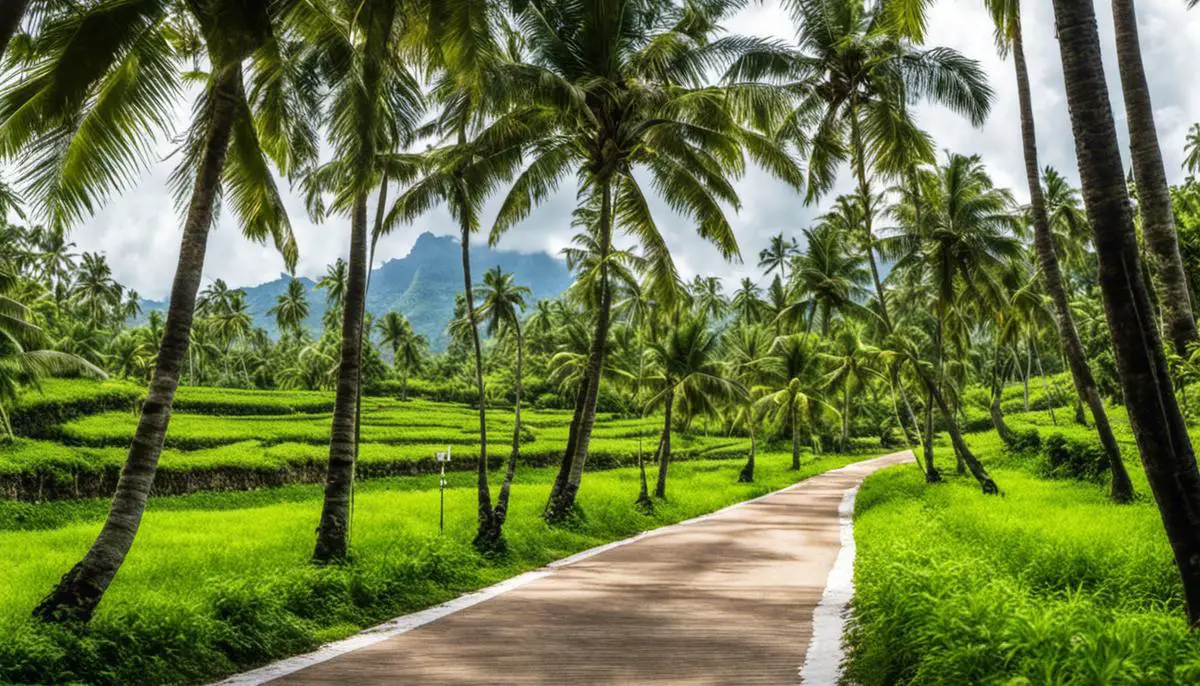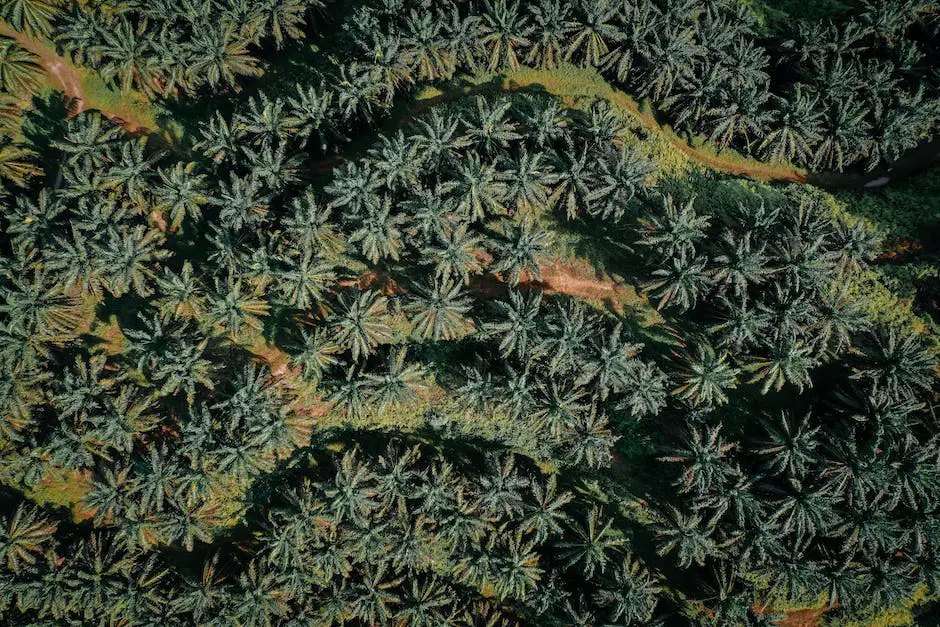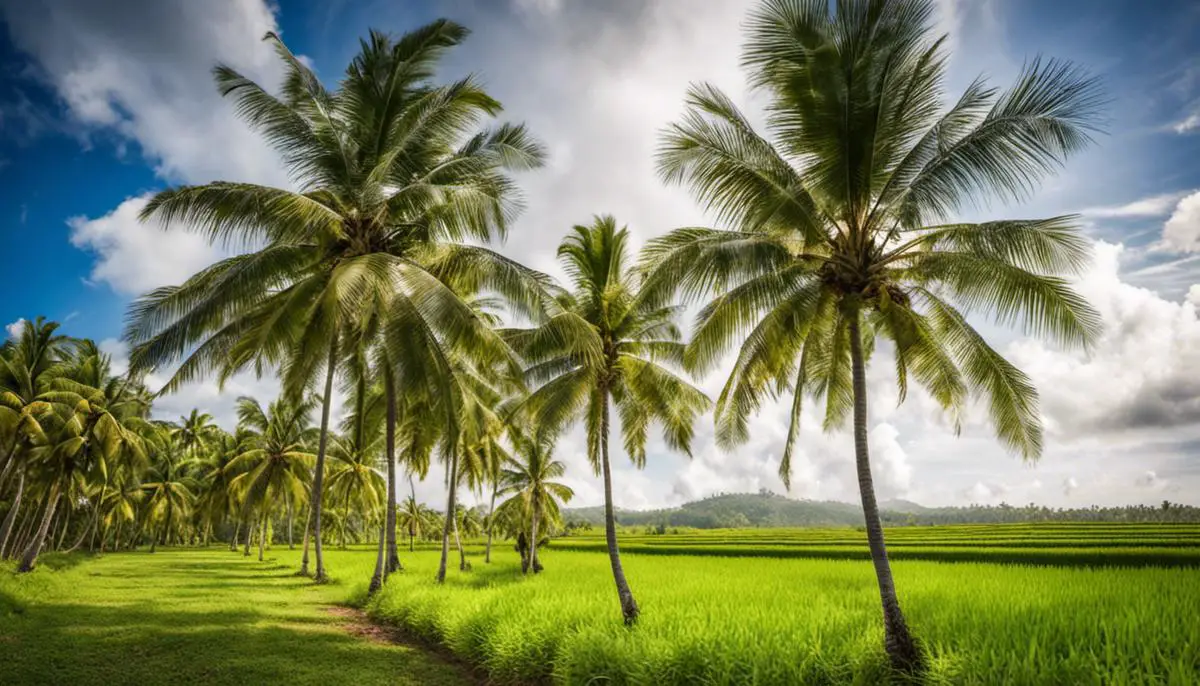Table of Contents
Coconuts, often hailed as the ‘tree of life’, offer more than just their delicious fruit. Cultivated in more than 90 countries worldwide, these trees play a significant role not only in the diet of millions but also in their economic survival. An in-depth exploration into coconut plantations provides a unique insight into its growth characteristics, cultural significance, and economic contributions, alongside the opportunity to partake in a truly educational and thrilling excursion. This interactive journey offers a hands-on experience in coconut harvesting, an understanding of its cultivation process, and a taste of freshly-harvested coconuts. Furthermore, the discussion expands to explore how coconut plantations make tremendous environmental contributions and serve as a crucial income source for the locals, whilst also reflecting on potential detrimental impacts and corresponding mitigation strategies.
Understanding the Basics of Coconut Plantation
Understanding the Basics of Coconut Plantation Tours
To begin understanding about coconut plantation tours, one must first have a basic understanding of what a coconut plantation is. Essentially, a coconut plantation is a type of farm dedicated to the cultivation of coconuts. Coconuts are tropical fruits that are grown worldwide, but they thrive best in particular regions, specifically those with a warm, humid climate such as Southeast Asia, South America, and the Pacific Islands. These fertile areas provide the best environment for coconut trees to flourish, which is why they become ideal spots for coconut plantations.
Coconut plantations thrive in environments that have plenty of sunshine, high humidity, and well-drained soil. With these factors, coupled with regular rainfall and temperatures between 20 and 32 degrees Celsius, one can expect a coconut tree to grow effectively.
Coconuts hold a vital role in these areas not only as a source of food but also for their versatility. Almost every part of the coconut tree can be used – the fruits, the leaves, and even its wood. This is a significant aspect that makes these plantations valuable to local economies.
The Lifecycle of a Coconut Tree
The lifecycle of a coconut tree can be divided into several stages, starting from the planting of the coconut seed. After germination occurs, which could take anywhere from two to six months, the immature coconut seedling begins to develop its first root system and leaves. At about five years of age, trees start producing fruit, or the coconuts themselves. It usually takes about a year for a coconut to fully mature after the flowering of its fruit stalks, and even aged trees can continually produce fruits until they are about 80-100 years old.
Exploring Different Varieties of Coconut Trees
Coconut plantation tours typically allow visitors to see these different stages. They provide an opportunity to witness each phase of the growth, right from the seedling stage to the coconut harvesting.
There are also different varieties of coconut trees one can learn about during these tours. These varieties are usually determined by the size of the tree, the type of fruit they produce, and their overall resistance to diseases. Some of the commonly known varieties include the ‘Tall’ and the ‘Dwarf’ varieties, referring to their size. ‘Tall’ varieties are known to produce large coconuts and have a higher resistance to diseases, making them ideal for commercial plantations. On the other hand, the ‘Dwarf’ varieties are smaller in size but produce a higher number of coconuts.
There are also hybrid varieties that combine the best attributes of the Tall and Dwarf types, such as the high yield of the Dwarf and the disease resistance of the Tall. These varieties are becoming more popular in modern plantations.
Understanding the Cooperative Impact of Coconut Plantations
Coconut plantation tours go far beyond a simple exploration of coconut cultivation. They are designed to educate visitors on each step of the process, from the moment a seed is planted to when a mature coconut is harvested and processed. These tours also provide a deep dive into the local culture, the traditions intertwined with the coconut plantations, and the profound socio-economic influence these plantations confer. In brief, they offer a holistic understanding of this intricate ecosystem.

Experiencing Coconut Plantation Tours
A Deep Immersion into the Coconut Plantation Experience
Embarking on a coconut plantation tour is an enriching and unique experience that will take you right to the heart of the operation. You’ll not only learn how these resilient tropical trees are cultivated and harvested, but will also get to participate in a range of engaging activities, making the experience lively and riveting.
The hands-on activities on these tours are very enticing, including picking ripe coconuts with long poles, an obligatory part of the itinerary. This thrilling experience allows tourists to appreciate firsthand the laborious work that goes into maintaining a thriving coconut industry.
In addition to the dynamic harvesting procedure, the tour provides in-depth knowledge about the life cycle of a coconut tree. The guide will walk you through the entire growth process of a coconut tree, discussing everything from seed germination to the tree’s fruit-bearing stage. This learning experience enhances one’s understanding of the valuable role coconuts play in bolstering both local and global economies.
Enjoying a fresh coconut straight from the tree is a highlight that stands out in anyone’s memory of these tours. Quenching your thirst with a glass of fresh coconut water, harvested from green coconuts, is a fantastic way to stave off the tropical heat. After that, a guide may show you how to crack the coconut to enjoy its creamy, jelly-like flesh – an absolute delight not to be missed.
Exploring the World’s Coconut Plantations: A Unique Journey
Scattered across the world are expansive coconut plantations that form the backbone of thriving coconut based industries and cultures. From the tropical landscapes of the Philippines and the verdant state of Kerala in India to diverse areas in Hawaii and the picturesque Caribbean islands, vast plantations can be seen showcasing unique local customs related to the utilization and preparation of coconuts. As such, coconut plantation tours offer a unique glimpse into the local food, art, architecture and more.
Organizations like Hawaii Plantations Tours, the Punta Cana Ecological Foundation in the Dominican Republic, and the Philippines’ Coconut Palace tour, all offer well-packaged tours to these plantations. They ensure that visitors soak up the fun, knowledge and enjoy the serenity of the coconut plantations while adhering to necessary safety standards among the majestic coconut groves.
In summary, embarking on a coconut plantation tour provides an offbeat experience compared to typical urban-based tourism. It offers a chance to gain insights into the importance of coconuts around the world, engage in direct harvesting, learn about local cultures and cuisine, and truly comprehend the invaluable role that the humble coconut tree plays in numerous lives.

The Environmental and Socioeconomic Impact of Coconut Plantation
The Environmental Impact of Coconut Plantations: A Look into Carbon Sequestration and Soil Conservation
The global significance of coconut plantations reaches beyond cultural and economic importance; they are a critical factor in combating climate change through carbon sequestration. Coconut trees, known for their hardiness and longevity, are superb carbon dioxide absorbers, storing substantial quantities throughout their lifespan. This aids in alleviating global warming – a pressing environmental concern. Moreover, coconut plantations play a role in maintaining a healthy ecosystem by reducing soil erosion. The wide-reaching roots of these trees bolster the soil, preserving its structure, and minimizing the depletion of the topsoil layer.
Socioeconomic Impact of Coconut Plantations
Furthermore, coconut plantations play a crucial role in the socioeconomic fabric of local communities. They offer livelihoods to locals and contribute to the rural economy. In many tropical regions, communities depend largely on coconut farming for their income and sustenance.
Not only do these plantations generate income through the sale of coconuts, but they also offer employment opportunities through various stages of coconut production, such as harvesting, processing, and marketing. As part of coconut plantation tours, guests have the chance to interact with local communities and understand how their lives are intertwined with these plantations.
Balancing the Negative Impacts
Despite the numerous environmental and socio-economic benefits, there can be negative impacts associated with coconut plantations. Among these include the potential loss of biodiversity due to the conversion of natural habitats into monoculture plantations, pesticide and fertilizer runoff, and the exploitation of workers.
However, sustainable practices can help mitigate these impacts. These include organic farming methods, fair trade certification, and community-based management. Participating in a coconut plantation tour not only provides a unique cultural and educational experience but also helps support these sustainable practices and contribute toward a more sustainable future.
The Role of Coconut Plantation Tours
Coconut plantation tours offer an insight into the workings of these landscapes and highlight both the positive and negative impacts of coconut cultivation. This type of agricultourism allows visitors to experience local farming practices, learn about sustainable agricultural methods, and understand the importance of maintaining biodiversity. Moreover, these tours provide economic support for local communities, boosting local incomes and helping to preserve traditional ways of farming. The tours can also elevate awareness about the need for sustainable farming practices and serve as a reminder of the role each individual can play in promoting eco-friendly initiatives.

From understanding the basics of coconut plantations to the immersive experience of plantation tours, coconuts serve as more than just a source of nourishment and livelihood. They are pillars of the community and key players in environmental sustainability. An exploration into the world of coconut plantations reveals just how valuable these mighty trees can be. However, it is necessary to keep in mind the potential negative impacts associated with their cultivation, and to constantly work towards further sustainable practices in order to balance economic productivity and environmental preservation. Thus, coconut plantations not only provide a unique tourism experience but also prompt a greater appreciation of nature’s gifts and the importance of ethical cultivation practices.

